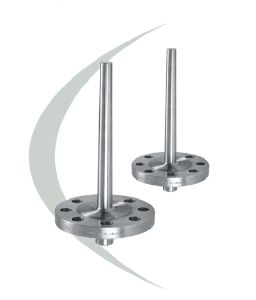Facts To Be Considered Before Selecting Thermowells
Posted by Admin on September, 08, 2020

A Thermowell serves a specific function of shielding thermocouple elements from corrosion and damage that may be caused to them. They are of various types and made out of different materials for one to choose from. However, selecting the best material must be based on the intended job specification. For all types of varieties, you can contact Thermowells Exporter Gujarat as per your requisite.
These are normally constructed of solid drilled-out bar stock and are designed to shield a temperature sensor from flow, high pressure and harsh environments. Thermowells cover and protect temperature sensors from the dangerous effects of the processes into which they are engrossed without substantially insulating the temperature sensor (thermocouple, RTD, etc.)
From the temperature of the process.
Types of thermowells exported by Thermowells Exporter from India
• Threaded
• Socket weld
• Weld-in
• Flanged
How to select the most suitable Thermowells?
While deciding the material to use for the thermowell, first of all, decide the corrosive condition to which the well may be exposed. Almost all wells are given high mirror polish which serves the purpose of enhancing their capability to decay resistance.
However, in most cases, it’s used to increase their strength more than the corrosion factor. Choosing should therefore be done with an expert because in case of a high water pressure service may need a well out of stainless steel, but from a diverse point of view relating corrosion, a brass well is more appropriate.
Components of thermowells
Thermowell process connections:
Thermowells are inserted into and associated in a process in a pressure-tight manner. The most common process links for thermowells include threaded, socket weld, and flanged connections.
Thermowell shank construction:
The most general shank constructions for thermowells are (1) straight, (2) step, and (3) tapered. A straight shank Thermowell is the same size all beside the fascination length of the Thermowell. A step shaft Thermowell has an outer diameter of at the end of the thermowell captivation length to provide a quicker response time.
Thermowell root dimension (Q):
The “Q” measurement of a thermowell is the thickest part of the shank of the thermowell that is on the hot side of the process association or flange. The size of a thermowell Q dimension is, of course, connected to the bore size of the thermowell and the process connection size.
Thermowell Bore size:
The inside length of a Thermowell. Regular Thermowell bore sizes are .260” and .385”. These sizes are planned to accept a quarter or three eights inch diameter sensor.
Thermowell Lagging Extension (“T”) Length:
The covering extension of a thermowell is often referred to as the thermowell’s “T” length. The lagging addition or T length is located on the cold side of the process association and is usually an extension of the hex length of the Thermowell. Normally, the T length enables the probe and thermowell to expand through insulation or walls.
How thermowell criteria are typically important to a thermowell user?
• Immersion length
• Potential for vibration
• Material.
How to select a good Thermowells Supplier in India they must
• Using the best quality material for the final product
• Having testing facility before sending it for installation
• Timely delivery anywhere in the country
• Having an expert team to support the client
• Pricing policy must be transparent for all the clients
Leave a Comment